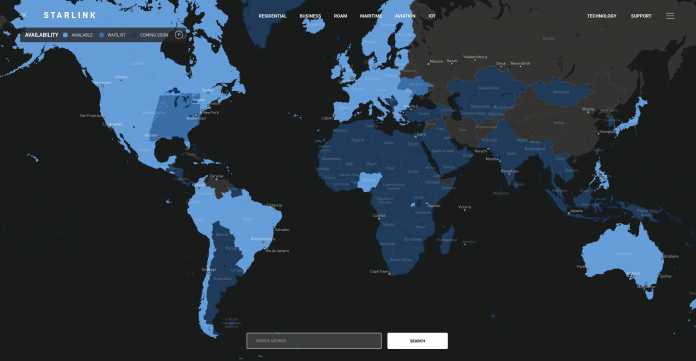The connection of the last white spots, inaccessible or difficult to reach areas in the Global South, but also in the Swiss mountains or in the German hinterland, that is the great promise of the new mega constellations. Hundreds or thousands of satellites are said to orbit at altitudes of 300 to 1000 km – in Low Earth Orbit (LEO) – and supply the world with broadband internet or track things.
They can also be a good tool for the rapid provision of communication links in disaster areas, affirm supporters and critics. This applies to natural catastrophes as well as to the “war catastrophe”, as the case of Ukraine, which was invaded by Russia, shows.
How many megaconstellations does it take to achieve these declared goals worldwide? “Probably not as many as are currently being requested,” says Joanna Kulesza, a lawyer at the University of Lodz. Kulesza has been researching internet governance for years, with a sober look at international law. On the subject Governance in the LEO network Kulesza has just co-authored a lengthy report for the internet society on decolonizing space with Berna Akcali Gur of Queen Mary University of London.
Space-Race
The mega-constellations registered with the International Telecommunication Union (ITU), in addition to Starlink, another 16 with a planned total number of currently 472,171 small or very small satellites, are an expression of the prevailing gold-rush mood. “The motivation is not primarily the need, but rather the intention to gain as many advantages in the space race as possible,” said Kulesza. “And because the space is largely unregulated, everyone’s strategy is to just grab as much ‘land’ as possible.”
The Outer Space Treaty (Treaty on the Principles Governing the Activities of States in the Exploration and Use of Outer Space, Including the Moon and Other Celestial Bodies) from 1967 did not envisage the commercial conquest of space.
“The Outer Space Treaty prevented a kind of ‘Star Wars’ feared during the Cold War. But it doesn’t provide any answers to the industrial exploitation of low-Earth orbits or space in general,” explains Kulesza. As long as you are peaceful, which has long been blurred when using satellites, you can do almost anything.
However, the US State Department quickly intervened when it came to Ukraine’s use of Starlink satellites for drone strikes and related complaints from the Russian Federation. In contrast, regulators such as the Federal Communications Commission (FCC) have so far been very generous when it comes to issuing licenses for mega-constellations, and the International Telecommunication Union is initially limiting itself to coordinating the frequencies on behalf of the member countries and to avoiding interference as far as possible.
Frontrunner Starlink
Elon Musk gave the starting signal for the big race for the new megaconstellations. In 2018, the idiosyncratic billionaire, who has been controversial since the botched Twitter takeover at the latest, sent the first two test satellites TintinA and TintinB into LEO orbit.
From 2019, he systematically built up his LEO network to the 3,179 satellites of the first and 116 of the second generation that are operational today. In 2023 alone, Musk launched 11 groups of a total of 551 Starlink satellites with his SpaceX carrier system. So it will probably be just 2.5 years before all of the 7,500 second generation small satellites approved by the FCC are in place.

According to its own statements, Starlink now serves one million users in many countries. It is striking that only a few users come from non-Western countries.
(Bild: Starlink)
Musk also tweeted in December that the customer base is also slowly growing. The company has now cracked the one million mark among active customers. For the time being, however, the majority are still based in the USA, and from there, collapsing bandwidths were reported in the middle of last year.

What is missing: In the fast-paced world of technology, there is often the time to re-sort all the news and background information. At the weekend we want to take it, follow the side paths away from the current, try different perspectives and make nuances audible.
More new satellites must therefore be put into the Starlink orbits and the fact that Musk can rely on in-house and now partly recyclable feeder rockets, currently Falcon 9, gives him an advantage over almost all other satellite operators. The capacity to launch thousands of satellites into the sky is one of the bottlenecks in the space race. Roscosmos is out for many satellite providers due to the Russian attack on Ukraine and Ariane is in the midst of a switch between Ariane 5 and Ariane 6.
Musk’s SpaceX, on the other hand, benefits from offering the Falcon 9 and the Falcon Heavy heavy lift rocket to other vendors, including Starlink competition, for their satellite launches. SpaceX has already launched OneWeb LEO satellites into orbit twice this year. Kuiper, Amazon’s grand constellation, is on the to-do list of the new Ariane generation.
